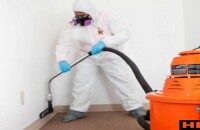Can Mold Make you Itch and Cast You as a Witch?
Household mold is dangerous to human health. According to the Centers for Disease Control there are numerous mold health concerns that include asthma, respiratory problems, lung diseases and itchy red skin. People who live in a mold-infested house are prone to developing tingling, red splotchy skin. In some cases the skin can appear as crimson splotches, and sometimes it can streak and resemble the fluttering hair of a witch riding a broomstick. In more extreme cases small red welts can develop on the body. If you have mold in your home and you start to develop skin irritations, you may be in for a lot more that phoning up a mold removal company or booking an appointment with a dermatologist because both mold and any visible marks on the skin are both signs that the person is a witch!
Control there are numerous mold health concerns that include asthma, respiratory problems, lung diseases and itchy red skin. People who live in a mold-infested house are prone to developing tingling, red splotchy skin. In some cases the skin can appear as crimson splotches, and sometimes it can streak and resemble the fluttering hair of a witch riding a broomstick. In more extreme cases small red welts can develop on the body. If you have mold in your home and you start to develop skin irritations, you may be in for a lot more that phoning up a mold removal company or booking an appointment with a dermatologist because both mold and any visible marks on the skin are both signs that the person is a witch!
Can Mold Cause the Witch’s Mark?
According to 16th century European witch hunters, one sure way to spot a witch was to find a man or woman who had an unusual mark on the skin. Birthmarks, moles, an odd-shaped freckle and even a rash were often mistaken for the “witch’s mark”—a physical brand that linked the accused to the devil. Perhaps the mere semblance of a mold-induced blemish or rash is not enough to deem one a witch. However, did you know that the presence of household mold itself is yet another sign that witchcraft is afoot?
Is Mold the Workshop of Witchcraft?
The history of mold runs back hundreds of years in the annals of witchcraft. In 17th century Europe the growth of household mold was synonymous with the presence of the devil as it was assumed that a good-to-do sort could never manifest such sinister-looking black spores on her walls and floors. When mold was discovered in people’s homes priests would be called in to bless the house and all those dwelling within, and if the mold remained homeowners were sometimes interrogated and even burned at the stake.
Mold’s relationship to witchcraft floats across the pond to America like airborne spores looking for a moist place to rest. In 1692 Salem was experiencing a massive witch hunt in which locals were accused of practicing the black arts. According to records the accused suffered from “hallucinations” and engaged in erratic behavior. In the 1970s U.S. Santa Barbara psychology major Linnda Caporael came up with a universally accepted theory that these hallucinations were likely brought on by a type of mold known as ergot—a fungus that infests rye and grains that were commonly used in the past several centuries to bake bread. A major byproduct found in ergot is ergotamine—a close relative to LSD. It is known through toxicology studies that consuming bread with traces of ergot can trigger one to have delusions, a creepy-crawly sensation on the skin, convulsions, vomiting, and yes even hallucinations.
So if you have mold in your home AND you have marks on your skin, you may be setting yourself up to take the fall as your town’s witch. Instead of casting suspicion, call a licensed mold remediation company before the pitch forks and torches come marching up your street!


